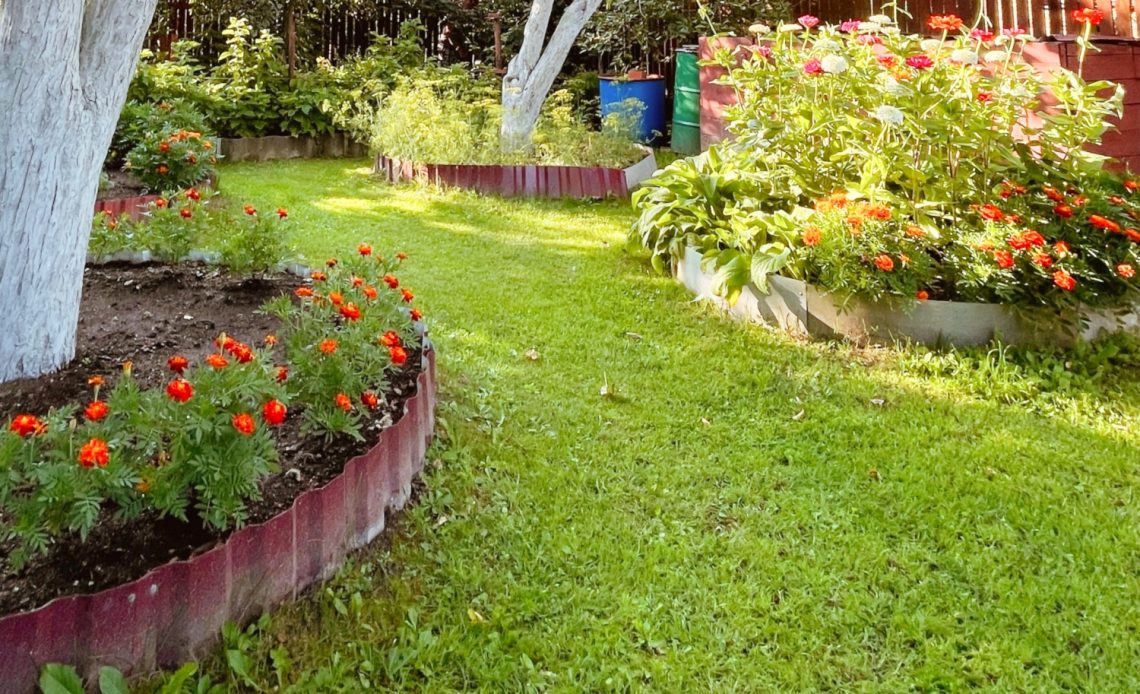

We’re here to help! Wild Yards is a completely free website that is 100% dedicated to helping you create a wildlife-friendly, sustainable yard. Read more
WildYards is reader-supported. When you buy a product through a link on our site, we may earn a comission. Every product is independently selected by our (obsessive) editors and our reviews are unbiased and objective. Read more about our mission or our privacy policy.
Adding a border around your flower beds delineates the space, accenting your yard with an aesthetically pleasing landscape. But it has practical purposes, as well. A garden border helps to prevent weeds while also encouraging the soil to retain moisture, allowing you to cut down on water usage. If you want to dress up your garden and save time and labor by adding edging to your flower beds, but you have no idea where to start, here are some low-maintenance garden border ideas to get your creative juices flowing.
Flowering shrubs including Texas sage, lavender, and salvia can be trimmed back to create a low-growing hedge for your garden. Hostas, ferns, and dusty miller add a dash of eye-catching foliage, while pavers, rocks, and wooden blocks from upcycled pallets make an excellent edging for your garden.
14 Low-maintenance garden border ideas
These 14 fantastic low-maintenance garden border ideas will allow you to spend less time tending to your landscaping, and more time enjoying it.
Hostas
If your flower beds include taller plants, like rose bushes, or if you’re going for a monochromatic look only featuring greenery, hostas make an excellent low-maintenance garden border. These plants thrive in full to partial shade, growing best in moist, fertile soils. Even though hostas have higher water requirements than some plants, over time, as they grow, they act as a living mulch, with their foliage covering the soil below, preventing evaporation.
Hostas range in size depending on the variety. The small ‘Dew Drop’ hosta has medium green leaves with thin off-white margins along the edges, and they average 6-inches tall by 8-inches wide. They make a beautiful understated garden border. But medium-sized hostas, including the variegated ‘Guacamole’ and ‘Stained Glass’ varieties, average around 2 feet tall by 3 feet wide if you’re looking for a more substantial border.
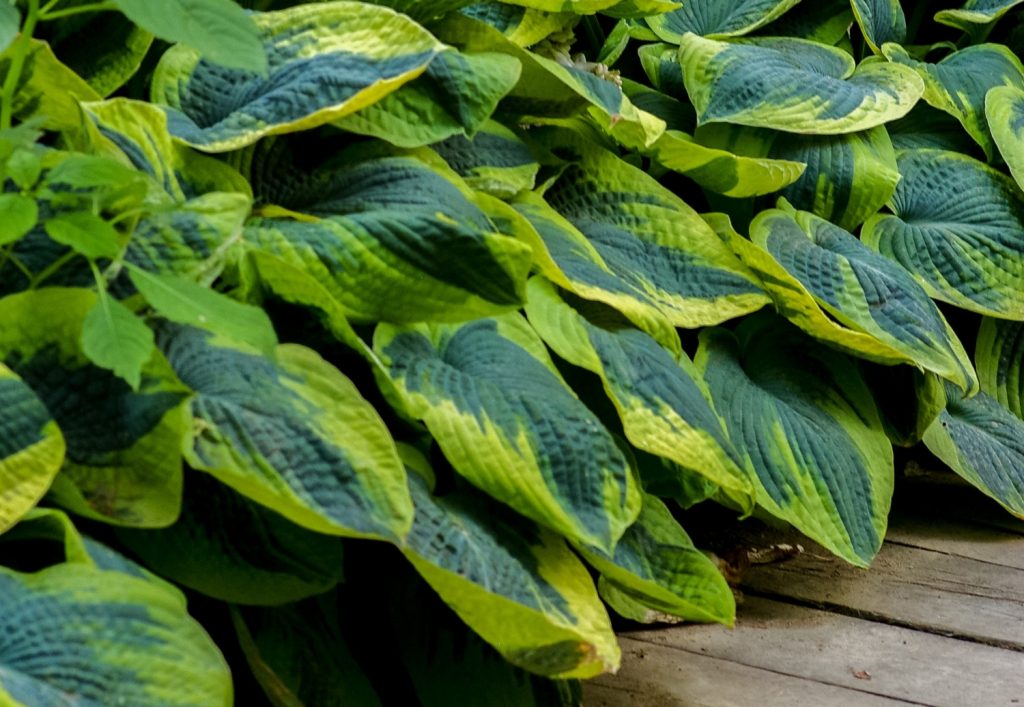
Lavender Hedge
Fragrant and sophisticated, lavender’s purple flowers and silvery-green foliage add an air of class to your garden, but in an unpretentious way. A low-growing lavender hedge is so easy to maintain once established. Because this herb is native to the Mediterranean region, it thrives in hot, dry climates. So if your ecoregion regularly endures dry spells, lavender is the fuss-free border plant for you.
Rabbits, deer, and even insects prefer not to nibble on lavender’s pungent foliage, so you won’t have to work hard to protect it from pests. Lavender can go weeks in between waterings and grows best in full sun when planted in nutrient-deficient sandy soils. Most lavender varieties average 20-inches tall by 24-inches wide. These plants bloom in midsummer, giving local pollinators plenty to eat when other plants have already gone to seed.
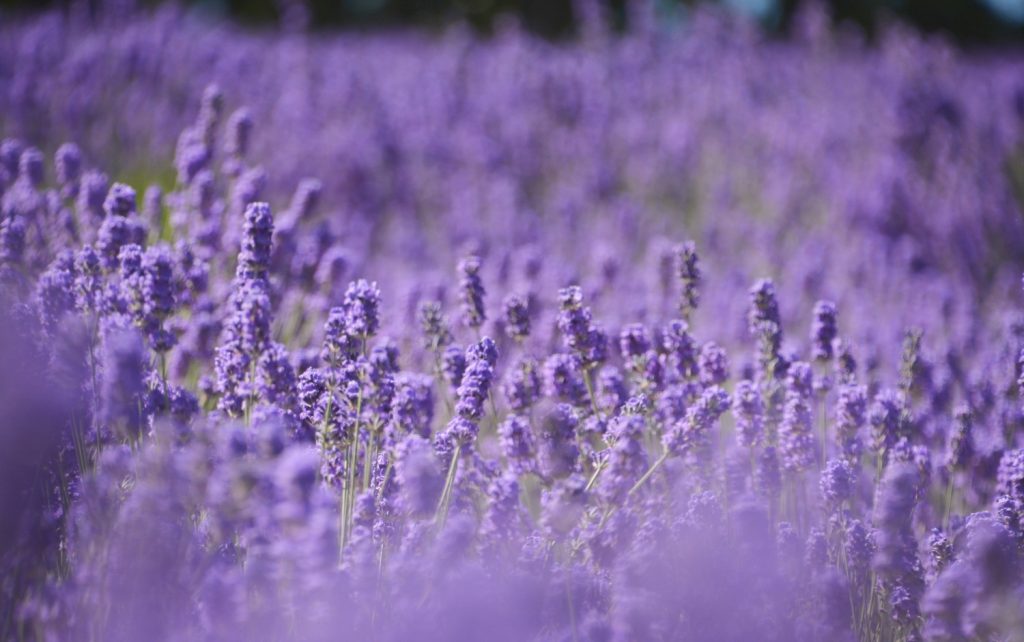
Monkey Grass
Also called Liriope, monkey grass is so easy to grow, you hardly have to do anything to keep it alive. This plant grows best in full to partial shade, and although it prefers moderately fertile soil, it can withstand sandy soils as well. Monkey grass is incredibly versatile, growing just as well in shady, damp gardens as in dry, partially sunny ones.
Monkey grass grows between 10 and 15-inches tall, and should be spaced 6 to 8-inches apart to give them room to grow. These plants don’t require much attention, but you should remove the dead foliage at the end of the growing season to improve air circulation and prevent them from becoming scraggly. Toss the dead bits into your compost bucket to create your own homemade fertilizer.
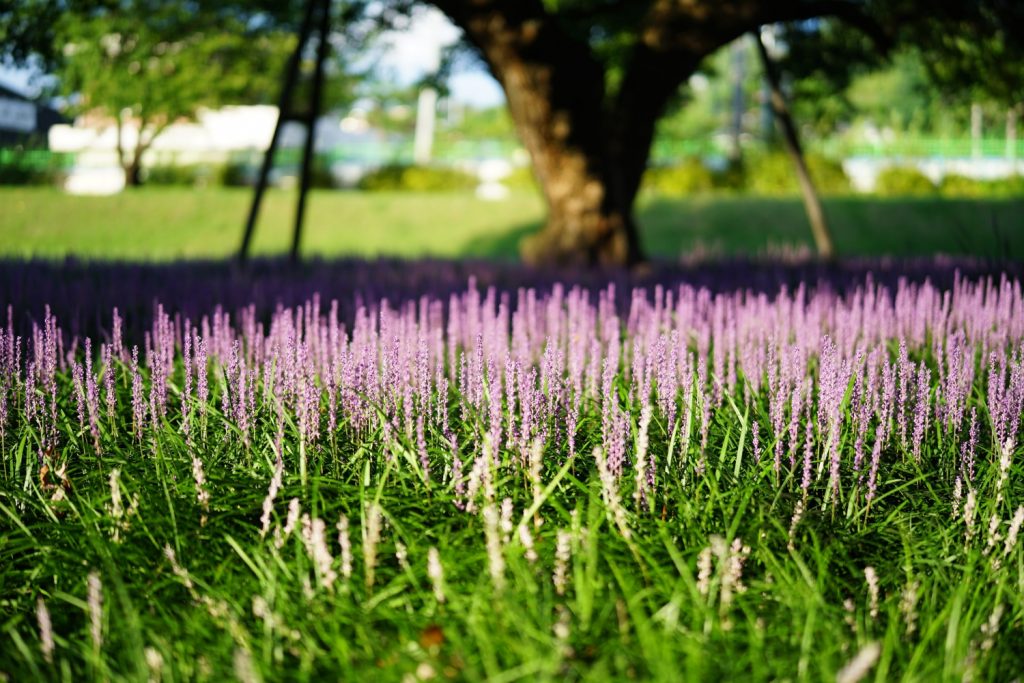
Salvia
If you’ve tried your hand at growing lavender in the past only to have the plants die, consider growing salvia instead. There are many different varieties of salvia in a range of colors, including red, white, pink, purple, blue, and yellow. Russian sage is one variety of salvia that greatly resembles lavender, with muted green leaves and sprays of purple blooms.
Salvias can grow 18 inches wide by up to 5 feet tall, though their size varies by variety. These plants grow best in full to partial sun when planted in sandy to loamy soils that drain well. Once established, these plants need very little attention. Though they benefit from seasonal trimmings to help give them a good shape.
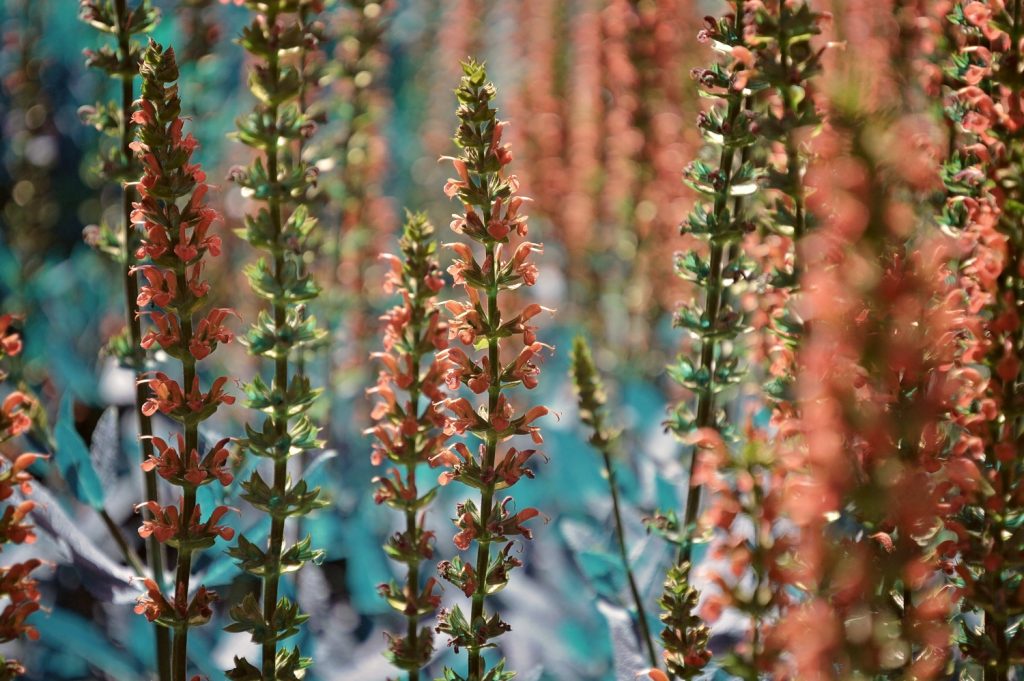
Creeping Thyme
Creeping thyme is a fragrant herb that grows best in neutral soils that stay moist, but not muddy. Like lavender, thyme smells so strongly that it naturally repels insects. This fast-growing ground cover will quickly carpet the bare spots in your flower beds and can be trimmed back regularly if necessary to keep it reined in. Creeping thyme is easy to propagate from cuttings. It’s also highly medicinal. Foliage can be brewed as a tea to manage coughing and allergy symptoms.
One of the major benefits of creeping thyme is that it’s resilient to foot traffic. So much so that it can be used to replace lawn turf. If you have kids and animals who don’t respect your decorative flower beds, creeping thyme has what it takes to stand up to all that wear and tear.
Hydrangeas
Hydrangeas grow well in partial shade when planted in moist, well-drained soils. These beautiful ornamentals with their large flower heads and stately foliage make a gorgeous low-maintenance border for your flower beds. However, they can fall prey to hungry deer. So be sure to spray your hydrangea bushes with homemade deer repellent.
Choose small hydrangea varieties, like ‘Little Lime’ and ‘Invincible Wee White’, that will accent the flowers in your beds without upstaging them entirely. While hydrangeas don’t require much attention, they do benefit from regular deadheading. Snip off dying flowers to encourage more blooms to develop.
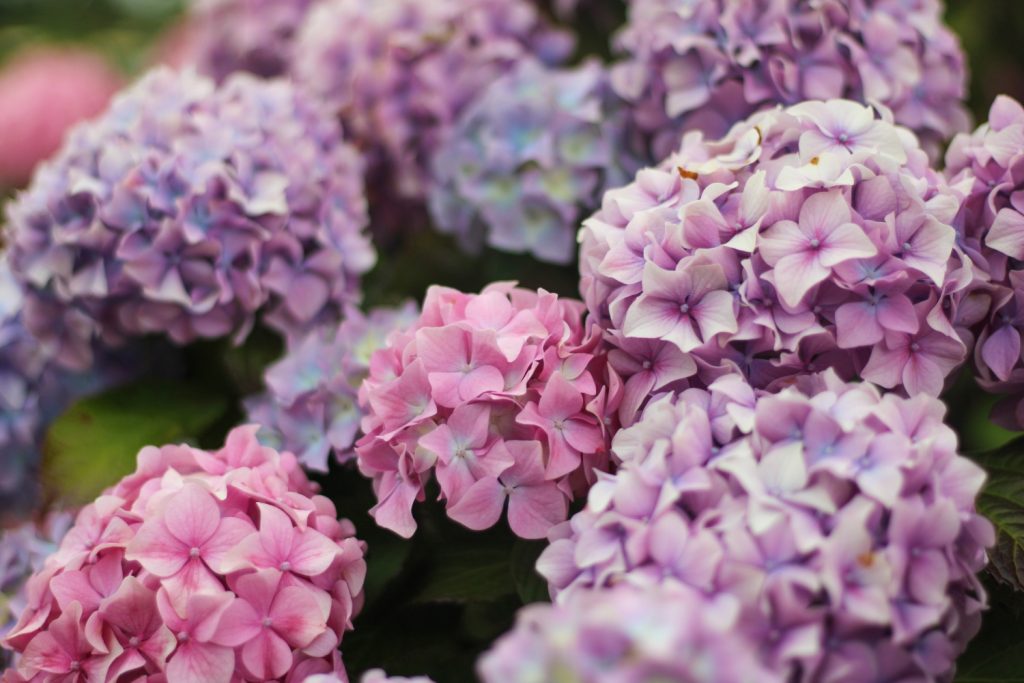
Pallet Wood Blocks
Pallet crafts are all the rage these days, so why not upcycle a pallet or two and use them to create edging for your flower beds? Simply deconstruct a few pallets and cut the boards into 10 to 15-inch sections. Use a hammer to drive the boards in along the edge of your flower beds. You can drive the boards in at the same height to keep things looking neat, or you can offset them with one board taller and the next one shorter for a less put-together look.
Because pallets are wood, this DIY edging will deteriorate over time. You’ll have to replace it every 10 years or so. But it works well as a low-maintenance garden border because it can easily hold in mulch, which reduces the need for weeding and helps soil hold onto moisture longer.
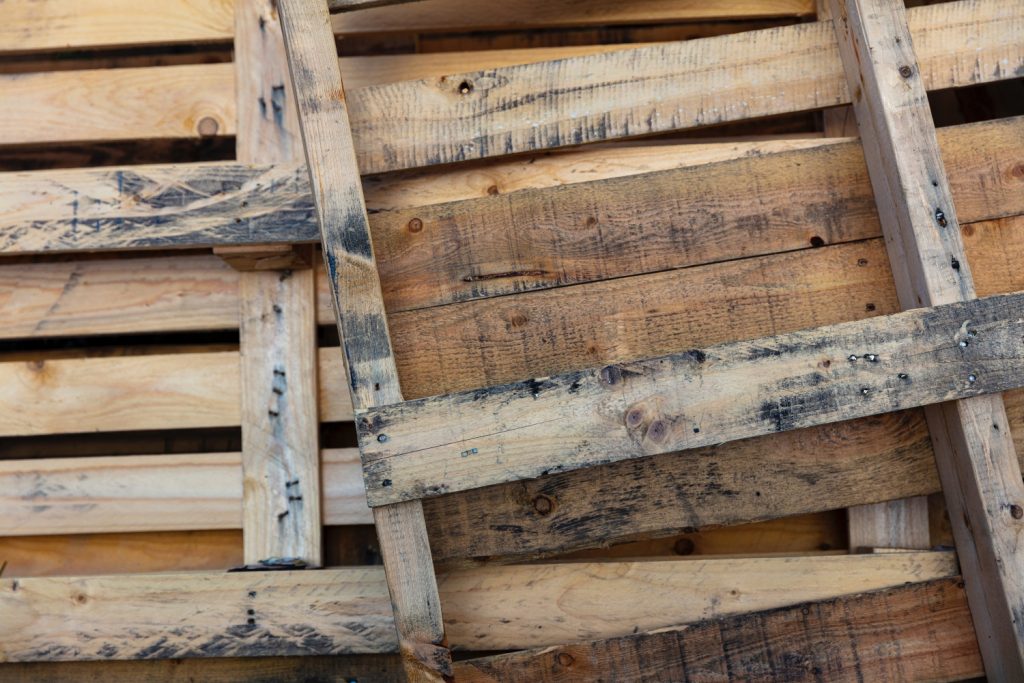
Daylilies
Daylilies grow effortlessly, adding a quick splash of color to the edges of your flower beds. These cheerful blossoms work wonders for attracting pollinators to your backyard. You can find daylilies in shades of yellow, orange, pink, red, and white. Mix and match complimentary colors to dress up your landscape, or choose a single variety for a more dramatic effect.
Daylilies grow between 2 feet and 4 feet wide, and some varieties can reach up to 4 feet tall. These flowers are perennials, and they self-propagate easily, so you won’t have to worry about replanting. Just leave the hose on them for a few minutes a couple of times a week, and your daylilies will keep your flower beds looking beautiful all season long.
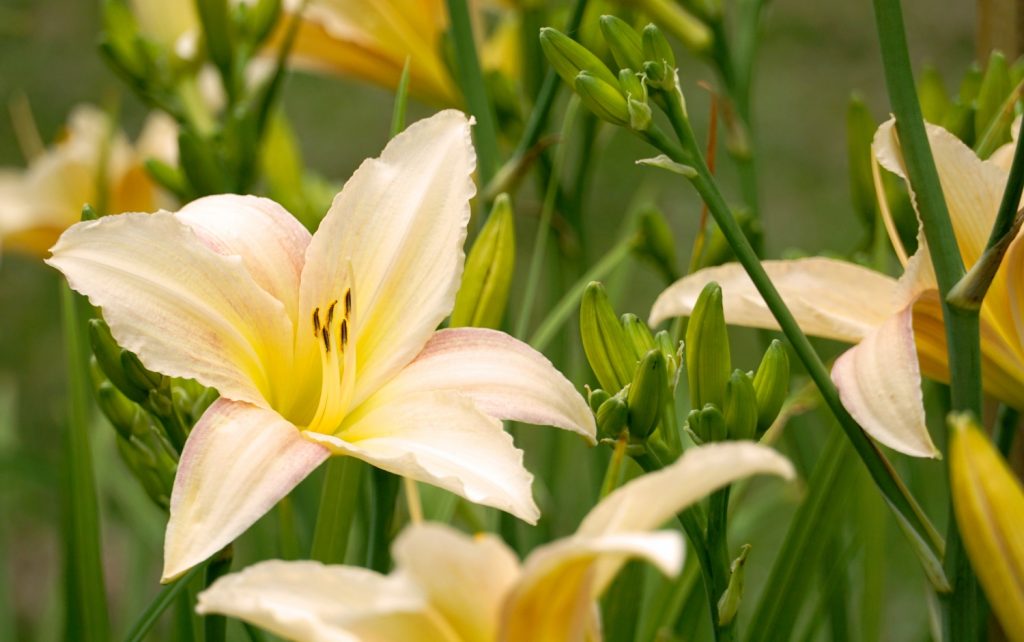
Mint
Long prized for its stress-reducing and gastric-soothing properties, mint is one of those “set it and forget it” plants that grow best when left alone. In fact, many gardeners consider mint invasive. Cuttings dropped accidentally in shady, moist locations will quickly root and carpet the ground, even without additional help.
There are over 7,500 varieties of mint. From the sharp spearmint and peppermint to the sweet orange mint and chocolate mint, this wonderfully fragrant herb makes gardening a breeze because it’s so self-sufficient. Plant mint in well-drained soil, and keep it damp but not muddy. Soon, you’ll have an effortless border for your flower beds that will also attract butterflies and bees to your backyard.
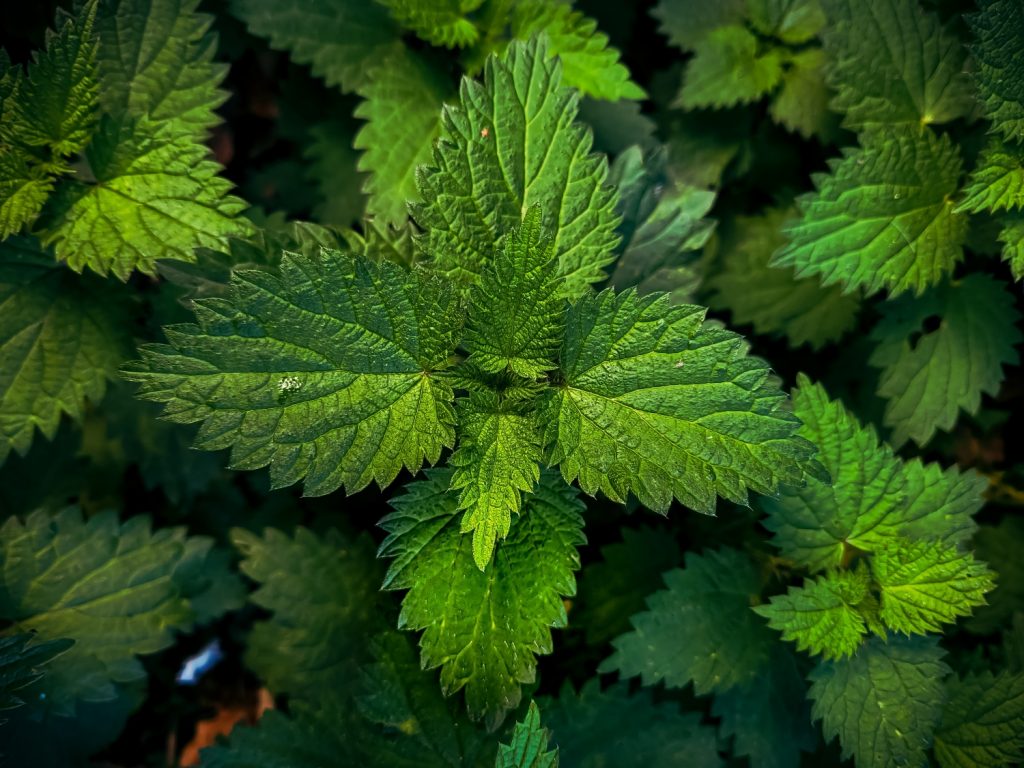
Boxwood
Boxwoods are a timeless classic, largely because they’re such a low-maintenance shrub. Low-growing boxwoods like ‘Wedding Ring’ and ‘Sprinter’ grow quickly, and average 2 or 3 feet tall and just as wide. These varieties are disease-resistant and unlikely to fall prey to pests — however, they are poisonous. So if you have cats, dogs, or horses, don’t let them nibble on these plants.
Boxwoods work best when grown as a hedge. The foliage packs densely, which doesn’t just work to separate your flower beds from your lawn but also helps trap moisture in the ground. Most boxwoods have uniform growing patterns, so even though you can trim them, there’s no need to keep them so perfectly manicured. They have a nice shape on their own.
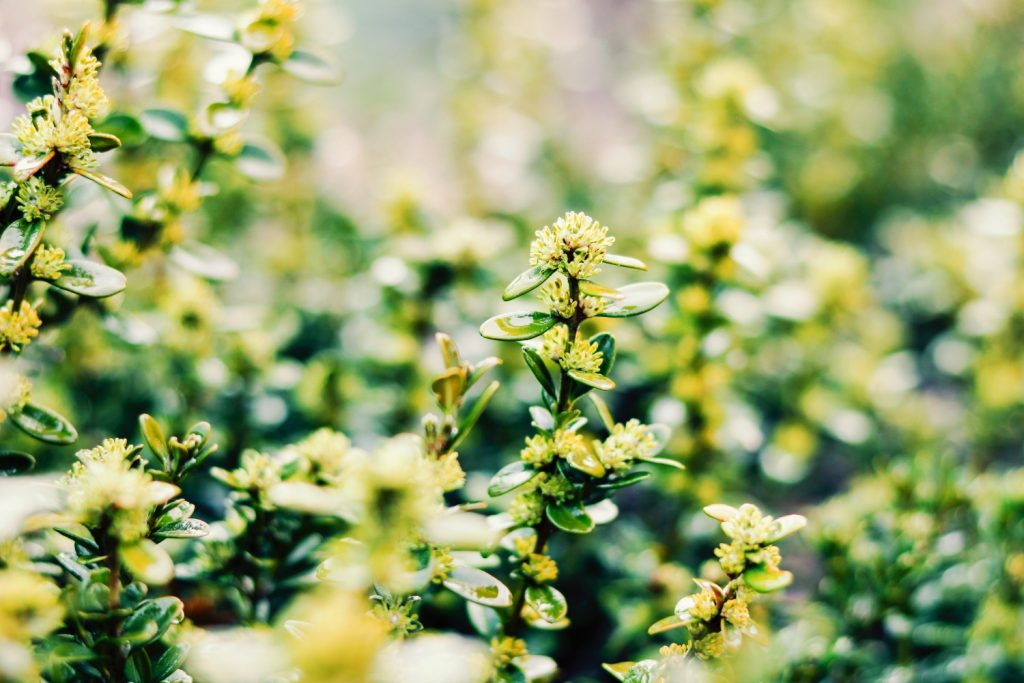
Texas Sage
Texas sage is a stout and stubborn bush that has lovely silvery green foliage set off by delicate purple blossoms. This plant is tolerant of dry conditions and can withstand being planted in full sun, even in the hottest of regions. Plant one or two Texas sage bushes alongside other plants with similar growing requirements to create a mix-and-match border, or plant the shrubs close together to form a small hedge.
Texas sage grows at a slow to moderate pace. It’s not as quick as creeping thyme or mint. But, unlike those fast-growing garden borders, Texas sage can withstand hot, dry conditions that would quickly kill other plants. Because it’s so hardy, it makes an incredibly low-maintenance garden border for southwestern and desert landscapes.
Dusty Miller
Dusty miller has intricate leaves that are silvery green in color and velvety soft to the touch. This plant’s delicate appearance might trick you into thinking it must be hard to care for, but don’t be fooled. Dusty miller is tolerant of a variety of soil types, including clay and sand, but the soil must drain well, or the plant will be prone to root rot.
In warmer climates, dusty miller can be grown as a perennial, but in cooler regions, its lifecycle gets cut short. Fortunately, this plant easily self-seeds, so as long as you refrain from pruning the dead flowers, you won’t have to worry about replanting your dusty miller. Overall, this plant requires little attention. An inch of water a week is enough to keep this plant happy.
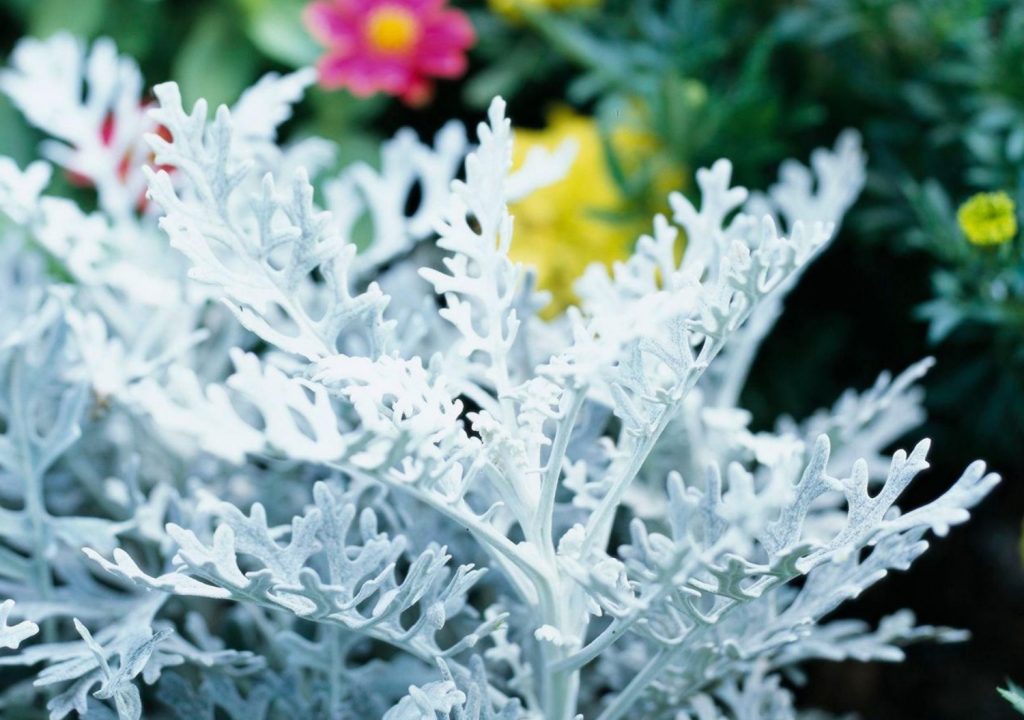
Ferns
Small ferns like foxtail and tassel ferns make a gorgeous border for flower beds growing in shady spots. If your yard tends to stay moist, ferns are a perfect choice for your garden because they just soak up the water. As long as you keep them hydrated, and remove the dead foliage every once in a while to keep air circulating around the plant, your ferns should grow just fine.
Ferns work well in flower beds, providing a touch of greenery. But they’re also stunning peaking out amongst a thicket of red, purple, and green foliage. Because they’re so versatile and so simple to care for, they’re a wonderful low-maintenance border for your garden.
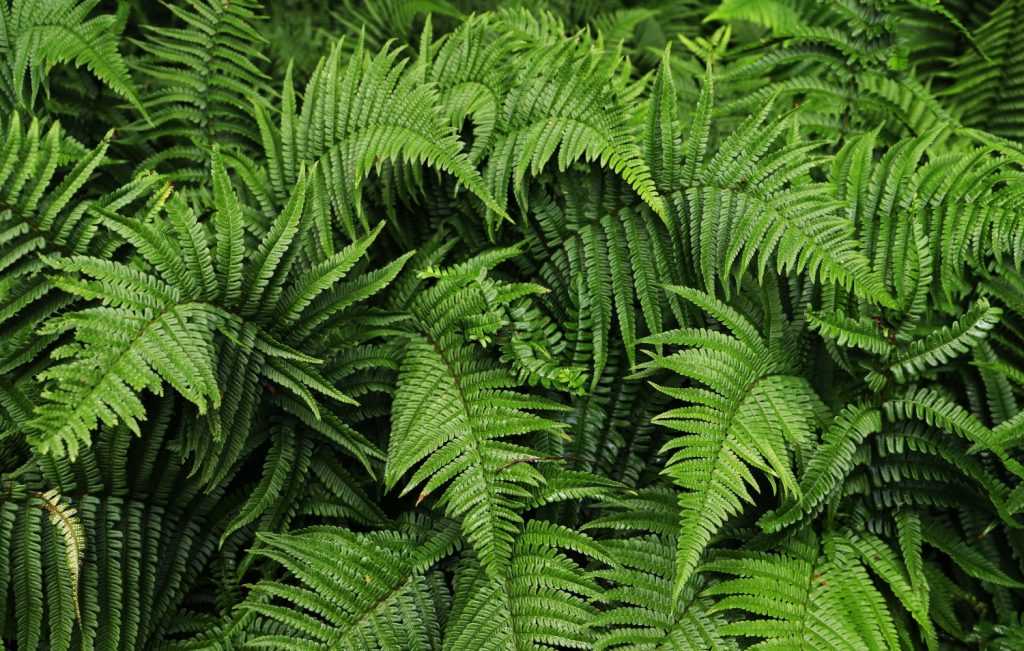
Pavers, Bricks, and Stones
Use pavers, bricks, and stones to clearly define where your flower beds end and your lawn begins. Stones can be staggered to build flower beds up, creating a retaining wall and helping to prevent erosion. But a single layer of bricks or pavers is enough to demarcate ground-level beds.
While rocks and stones look best above ground, consider burying pavers and bricks so that the tops are at soil level. This way, you can easily mow over them instead of having to go around your flower beds with a weedeater. You can also add gravel to create footpaths in between flower beds, eliminating the need to mow.
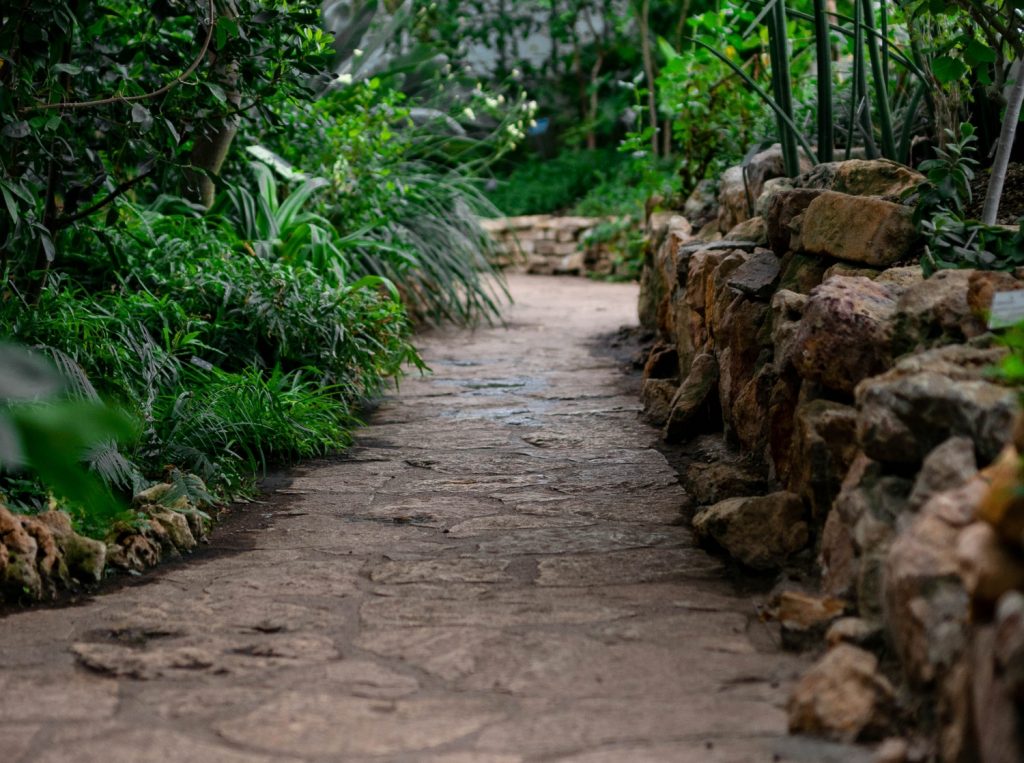
What are the benefits of adding a border to your garden?
From an aesthetic perspective, adding a border to your garden helps bridge the gap between your landscaping and your lawn. But garden borders aren’t just meant to look pretty. They serve a purpose, too.
Using low-growing hedges and ground cover plants to trim out the edges of your flower beds prevents weeds from popping up in between plants. They also cast shade on the ground below, protecting it from the sun’s harsh rays so it can hold moisture in longer.
Greenery provides ornamental plants with an understated backdrop while flowering shrubs can help draw more local pollinators to your backyard. Overall, creating a border for your garden saves time and labor, while making your backyard more beneficial to the ecosystem.
